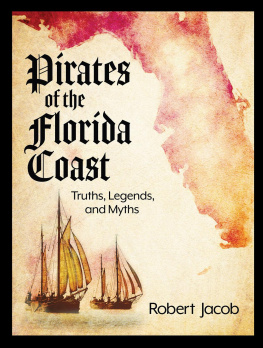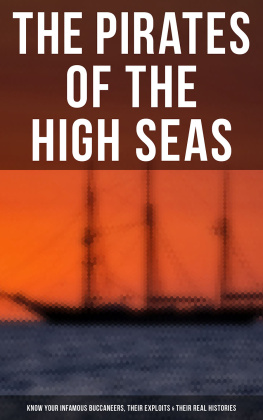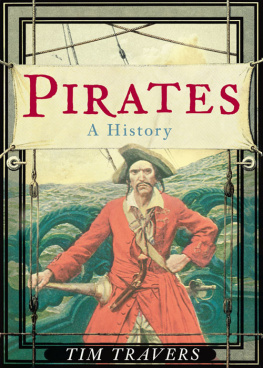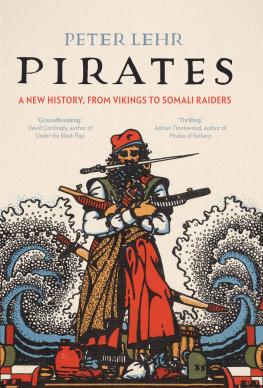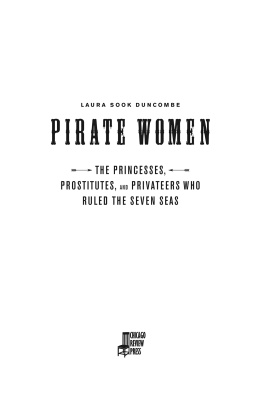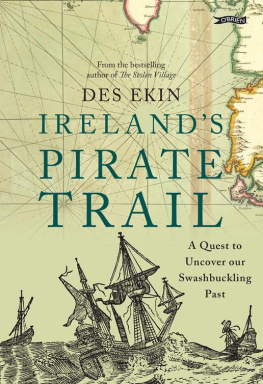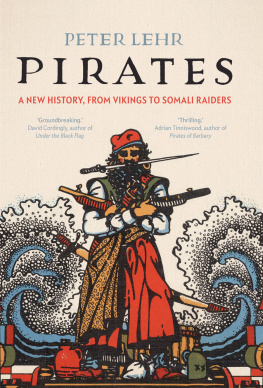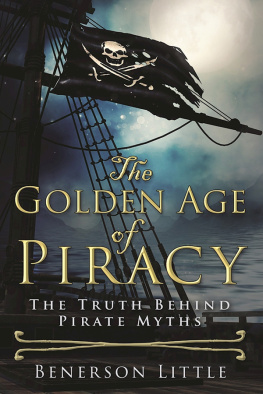Pirates of the
Florida Coast
Truths, Legends, and Myths
Robert Jacob

P ublished by
DocUmeant Publishing
244 5th Avenue, Suite G-200
NY, NY 10001
646-233-4366
Copyright 2022 Robert Jacob. All rights reserved
Limit of Liability and Disclaimer of Warranty: The design, content, editorial accuracy, and views expressed or implied in this work are those of the author.
No part of this publication may be reproduced, stored in a retrieval system, or transmitted in any way by any meanselectronic, mechanical, photocopy, recording, or otherwisewithout the prior permission of the copyright holder, except as provided by USA copyright law.
For permission contact the publisher at Publisher@DocUmeantPublishing.com
Editor: Philip S. Marks
Assistant Editor: Anne C. Jacob
Map and Woodplate Images provided by Barry Lawrence Rudman Antique Maps Inc. www.Raremaps.com
Cover Design by: Patti Knoles, www.virtualgraphicartsdepartment.com
Ship Illustration Figure 12 by: Ginger Marks, www.DocUmeantDesings.com
Layout & Design by: DocUmeant Designs, www.DocUmeantDesings.com
First Edition
1 2 3 4 5 6 7 8 9 10
Library of Congress Control Number: 2021040554
ISBN: 978-1-950075-59-1 (print)
ISBN: 978-1-950075-60-7 (ePub)

Dedication
T his book is dedicated to the living historians and reenactors throughout the world who devote many thousands of selfless hours in the pursuit of accurately portraying history and keeping it a real and interactive experience for those who attend their events and visit their historic sites.
The vast majority of these devoted individuals do this simply for the love of history, without any monetary compensation whatsoever. Each of them often bears a tremendous financial expense for clothing and equipment which they purchase on their own in order to make their historical interpretation as accurate and real as possible. They keep history alive.

Contents

List of Illustrations
Preface
W ith each decade, there seems to be one historical period that grabs the imagination and attention of the public. Sometimes this is brought on by the anniversary of a significant historical eventlike the bicentennial of the Revolutionary War in 1976. Sometimes the craze is sparked by a blockbuster motion picture. Western reenacting was extremely popular in the late 1990s after the release of Tombstone . Beginning around 2005, there has been a renewed interested in pirates.
From my early childhood, I have been fascinated with different time periods and historical events. Since 1971, I have been heavily involved in historical reenacting and living history interpretation of one time or another from the Renaissance through the late 19th Century. The French and Indian War was my first era. That soon led to the Revolutionary War. Well, it had to. The year was 1974 and the entire country was gearing up for the Bicentennial.
Around 2005, my interests shifted to piracy. Not as a practicing participant in robbery on the high seas or illegally copying DVDs, but as a historical interpreter, reenacting the thrilling time of the Golden Age of piracy for the general public. For many decades, the bookstores of the world have been flooded with numerous volumes on pirates. But in researching this period, I quickly found that most of the events described in many books written about pirate history were highly contradictory. Also, there is very little written about how they lived, the clothes they wore, the weapons they used, the food they ate, and their often exciting and dangerous lives. Hard facts from contemporary documents concerning pirate history are scarce. After all, as a rule, they were a very secretive group. They seldom filed reports or kept logbooks. There is almost nothing about how they lived or felt about their comrades and their risky, often violent encounters.
But the real problem comes from the fact that the literary market has been flooded with hundreds of books professing to be historically correctbut they arent! Many modern works about pirates are simply rewrites of older books written many years ago or are based upon local legends and unverified stories. For the books based upon works from the 17th and 18th centuries, it has generally been accepted that those books were historically accurate simply because they were written at a time contemporary to the pirates themselvesbut most were not. Many authors of the day were more interested in writing bestsellers than scholarly works of history. For the books based upon local legends, few authors checked the facts. Many of them were content to retell the legends as if they were true. This compelled me to write my first book, A Pirates Life in the Golden Age of Piracy. Digging deep into the true history of piracy over a ten-year period, I unearthed a treasure of information that not only tells the truth about these pirates but examines the politics that motivated them. It also delved into their lifestyles as I examined their clothing and fashions, weapons and tactics, food, ships, and attitudes which opened a window into how they lived and what they thought.
I am not a formally trained historian with years of experience researching facts in dusty archives and lonely corridors. I havent spent dozens of years of my life studying history in higher institutions of learning. I am an officer in the United States Marine Corps who retired after serving for 31 years. But in addition to my military service, for most of my life I have been a historical reenactor; a person dedicated to living history interpretation. Im not a paid historian, but rather an amateur with a passion for history and historical accuracy. Being so involved with living history has given me a unique perspective on historical events. It has provided me with a first-hand look into the lives of people from the time periods I have recreated.
While selling my first book, A Pirates Life in the Golden Age of Piracy, I was frequently asked about pirates in Florida. That makes sense since I lived in Florida and most of my lectures, book signings, and sales events were in that state. Realizing the need for a follow-on book dealing specifically with piracy in Florida, I began examining the historical record and local legends about the pirates and privateers that operated along Floridas 1,350 miles of coastline. But unlike most of the pirates of the 17th and early 18th centuries, where written accounts abound (accurate or not), most of the accounts of Floridas pirates in the late 18th and early 19th centuries seem to primarily come from local legends. These legends are deeply rooted in local tradition and in some cases, have achieved the status of fact in the minds of many people.
Next page
